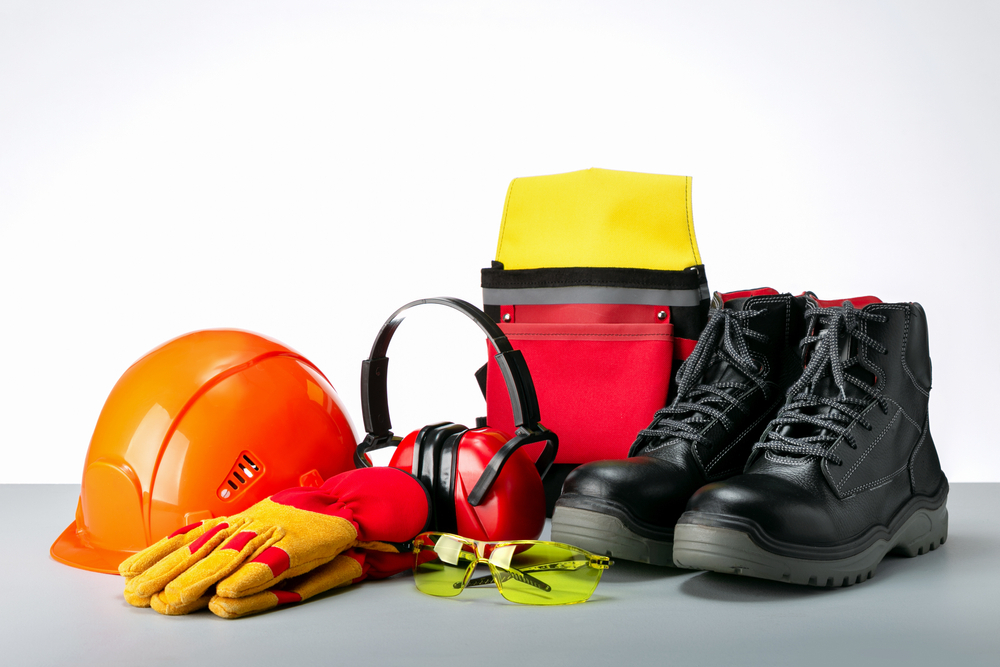Importance of Safety Equipment at Industrial Workplace

Safety equipment can mean the difference between life and death in the industrial work environment. In these risky jobs, catastrophe can happen at the drop of a hat. Even when accidents aren’t dramatic and substantial, the very nature of many labor-heavy jobs can have a degenerative effect on the human body.
People who spend many years with power tools experience hearing loss and joint damage, among many other aches and pains. While equipment alone can’t sponge up all the damage, making sensible personal choices can certainly make a substantial difference over time. In this article, we highlight the importance of safety equipment in industrial work environments.
Overview
Safety equipment is the sort of thing everyone who needs it wants to have but never hopes to use. Paradoxical perhaps, but also a daily facet of life as a worker in a physically demanding job. You know there are risks, attached, and that the only way to prevent them is to come prepared. That’s the role that safety equipment plays in the workplace.
When a heavy object falls, something goes wrong with a powerful tool, safety equipment is what stands between the person and serious injury.
While most people working in physically demanding jobs understand the need for safety equipment, many may not quite understand the full scope of the benefits of industrial safety products. Below, we highlight not just the ordinary applications of safety equipment, but also some of the more elusive benefits of the industrial safety products that add vital safety to an industry that would otherwise be filled with high-risk variables.
Risks
It’s easy to imagine many of the physical risks that come with industrial work. A heavy item falls. A mistake gets made with a dangerous tool and someone gets hurt. Fortunately, the majority of industrial workers will go their entire careers without ever experiencing a major workplace injury.
However, there are still physical risks that come simply from working in physically strenuous jobs for long periods of time.
Knee and spine damage, from standing, sitting, and crouching in uncomfortable positions. Hearing damage from long-term exposure to extremely loud noises. Even the vibrations from holding power tools can cause nerve and joint damage over time.
These factors can have a serious impact on a retirement-age worker’s quality of life. Fortunately, the risk of encountering these symptoms has gone down considerably with the proliferation of modern safety equipment. Minor precautions can add up to having a significant impact over time.
Important pieces of safety equipment
Below, we take a look at some industrial safety equipment that is commonly used in construction, warehousing, shipping, and other forms of industrial activity. Note that the items on our list are highly limited. Safety equipment is very subjective to industry. If you are looking to outfit a specific work area with safety equipment, be sure to consult the experts to find out what risks are associated with your form of industry, and how you can best protect against them.
Impact resistant gloves
Impact-resistant gloves are fortified with a small steel plate that helps to reduce the risk of impact damage in the event that a worker drops a heavy object on their hands. This safety equipment can be hot, heavy, and uncomfortable, but does make a serious impact on the wearer’s health, even if they don’t wind up experiencing an unfortunate accident.
As stated previously, working with high-powered equipment can cause nerve damage and pain in the joint areas. Impact-resistant gloves offset some of this damage by absorbing the vibration from power tools.
While the impact of this is not necessarily felt right away, it can add up significantly over the course of a career, proving that small choices in the industrial setting can have a major impact on health over time.
Ear plugs
Ear plugs are a simple but important piece of safety equipment for anyone working in noisy environments. It’s important to keep in mind that even sounds that aren’t actively hurting your ears can do lasting damage if not mitigated. Decibel exposure is measured over time, meaning that exposure to loud noises can accumulate and cause harm even if none of the noises were individually terribly loud. Some city environments come close to exceeding recommended decibel levels.
Environments that use heavy equipment and tools certainly will also fall into this category. Ear protection is not always a suitable option, as an inability to hear properly will pose its own risks. However, professionals working in a noisy work environment should speak with their supervisors about appropriate noise mitigation strategies.
Hard hats
Basic and ever-important, hard hats serve to protect your head on job sites. They are commonly applied to situations where there is the potential for falling objects. However, they are often a useful safety precaution even in situations where the risk of head damage is minimal.
Steel toed shoes
Steel-toed shoes are fortified with a steel plate that protects the toes in the event that a heavy item falls on them. They tend to be very heavy and awkward, but because they can absorb significant levels of damage, they are often considered mandatory on many job sites.
Safety vests
Safety vests are used in situations where it is important to establish visibility or distinguish yourself from other pedestrians. Though a relatively small touch, safety vests can make it much easier for motorists to see construction workers on a highway, or in other similar situations. As safety equipment goes, vests are about as easy to implement as it gets. Affordable, quick to put on, and not the least bit uncomfortable, they are a simple way to keep yourself safe on the job.